2024 Aston Martin Vantage review: Greater Britain
It may cost a lot of money, but it’s also a whole lot more sportscar this time around.
Published on May 14, 2024 03:09:00 PM
17,361 Views
Follow us on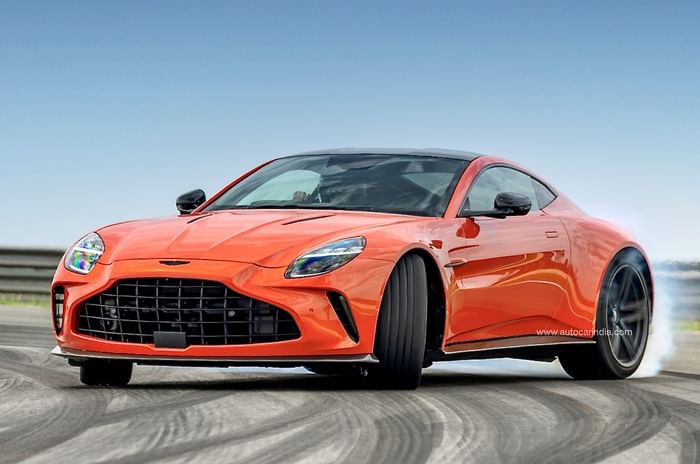
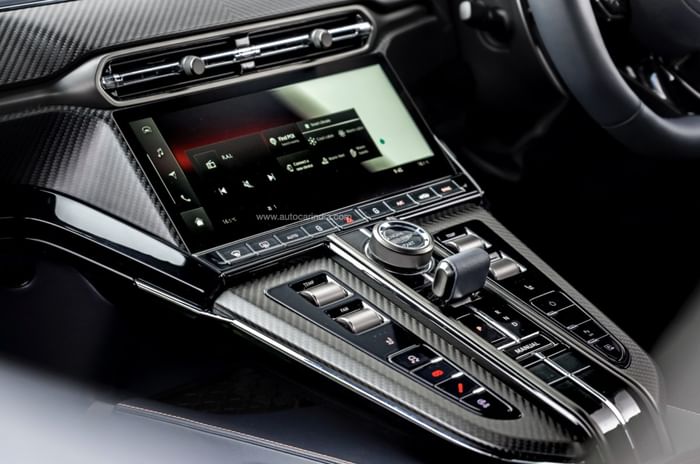
The graphics on the touchscreen are slick but bit too small to read (or touch) comfortably while on the move.
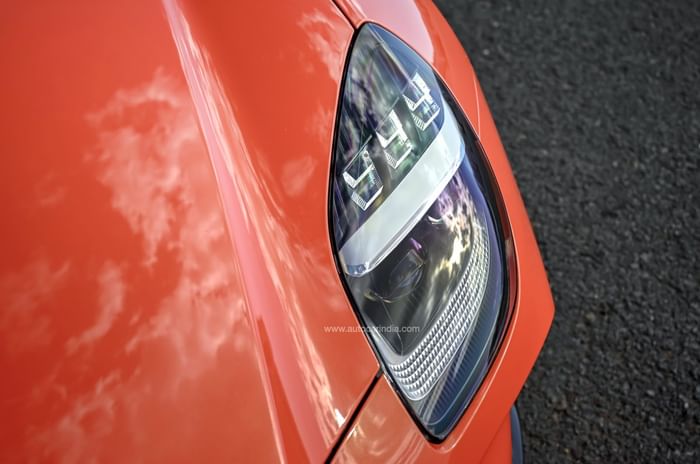
It gets headlamps with the new six-LED signature and Matrix tech.

The 10.25-inch digital driver’s display is housed in a sporty binnacle.
We Like
- Visual and aural drama
- Ferocious performance
We Don't Like
- Expensive
- Twitchy handling
Vantage. It’s a word that rolls out of your throat nicely. Regal, powerful and full of history; most might know it in a more modern sense as Aston Martin’s junior sportscar, but the badge actually dates back over 70 years. It’s a name revered by sportscar enthusiasts, but the last version, which came out in 2018, didn’t quite click the way its forebears did. Maybe it was the polarising looks, or the middling power output, or the fact that the interior and tech felt outdated, but as is evidenced in the car you see on this page, Aston Martin has gone at it hammer and tongs to make amends. And the result is so incredible, it might have inadvertently created a bit of a quandary for its maker. Read on.
2024 Aston Martin Vantage exterior design
Whatever your views on the face of the old Vantage, you have to agree this new one is far more conventionally attractive. It’s pure aggression, borrowing a lot from the DB12 (a car that’ll be referenced many times more), but keeping a distinct identity too. There are larger headlamps with the new six-LED signature and Matrix tech, while the grille is larger (by 38 percent, fellow nerds), placed higher and tipped forward. There’s more sculpture to the bonnet, and the bumper is pulled back at the sides, with vertical air curtains cut into it, a homage to the One-77 supercar.
 The new Vantage is far more conventionally attractive than the outgoing model.
The new Vantage is far more conventionally attractive than the outgoing model.
| Aston Martin Vantage Price, Mileage, Specifications, Features and Variants | |
|---|---|
| Brand | Aston Martin |
| Model Name | Vantage |
| Aston Martin Vantage Price | ₹ 4.61 crore |
| Aston Martin Vantage Range/Mileage | Petrol : 8.26kpl |
| Aston Martin Vantage Specifications | Coupe | 2 doors | 2 seats View All Specs |
| Aston Martin Vantage Features | LED headlight | 10.25-inch Touchscreen display | 4 airbags View All Features |
| Aston Martin Vantage Variants | 4.0 V8 Petrol Coupe View All Variants |
With the nose, understandably, being the primary focus of the redesign, the rest of the Vantage has continued largely unchanged. There are new wheel designs, shared with the DB12, that are 21 inches in diameter; 275-section up front, 325 at the rear. The spec sheet lists the ground clearance as just 94mm, though it’s unclear if that’s the laden or unladen figure, as it looks pretty decent and didn’t bottom out even on really poor sections. Also similar to the DB12 are the delicate wing mirrors whose entire housing pods move (rather than just the glass) when you adjust them, allowing for fewer motors and a larger glass area. The vents below the mirrors have brought back the classic Vantage ‘side strake’ design feature, while retaining their function of purging turbulent air from the front wheel wells.
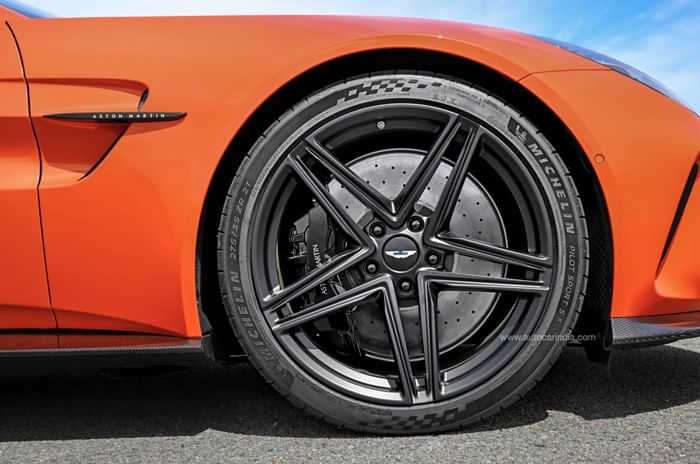
Moving to the rear, the pronounced hips – 30mm wider – seem like another nod to the dramatically proportioned One-77, though the tail section itself doesn’t seem to have changed much. Aston does tell us the diffuser – along with the underbody aero – has been revised, and along with the ducktail spoiler, can generate 77kg of downforce at speed. The exhaust pipes, addressing customer feedback, are also larger. And while it’s not massive by any measure, thanks to the hatchback opening, the Vantage’s boot feels more usable than the DB12’s; ironic as the latter is meant to be the long-distance cruiser.
 Tail section remains largely unchanged from before.
Tail section remains largely unchanged from before.
2024 Aston Martin Vantage interior and features
Like the DB12, the Vantage has been blessed with an all-new and thoroughly modern interior, and true to the car’s positioning, it is more driver focused. You’re sat 10mm lower, which doesn’t sound like much but makes a big difference. And cascading between the seats is the new ‘waterfall’ central console with a battery of beautifully crafted buttons and roller switches. Above them, but still low enough to avoid distraction, sits the new 10.25-inch touchscreen, whose hardware and software was developed entirely in house. It’s mirrored in a 10.25-inch digital driver’s display, which is housed in a sporty binnacle, but while the graphics are slick, on both screens they’re a bit too small to read (or touch) comfortably while on the move.
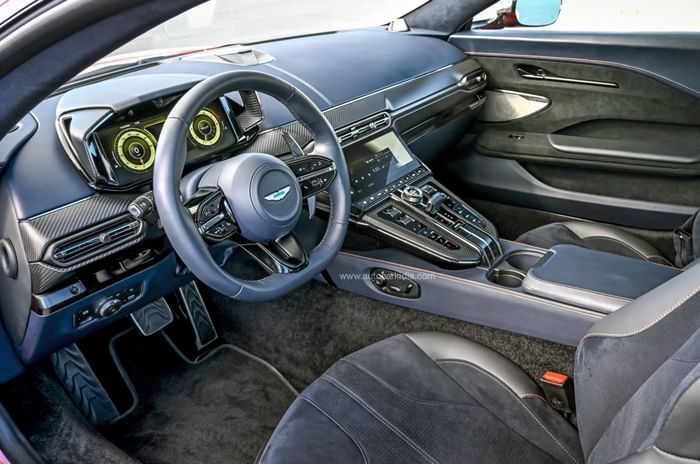
The standard ‘Comfort’ seats are the softest, while the barely-padded ‘Performance’ carbon-fibre buckets are a gift to chiropractors everywhere (they save weight though). Predictably, it’s the mid- range ‘Sports’ seats that mix comfort and support best; they even get heating and ventilation. A change that might irk purists is the repositioning of the paddle shifters from the steering column to the back of the wheel, necessitated by the new wheel’s design, but even at full lock on the track, this never felt a bother. There isn’t a lot of storage: slim door pockets, small cup holders, a shallow tray under the arm rest and a space under the dash for the wireless charger. They have added a glove box though, and there is some space behind the seats.
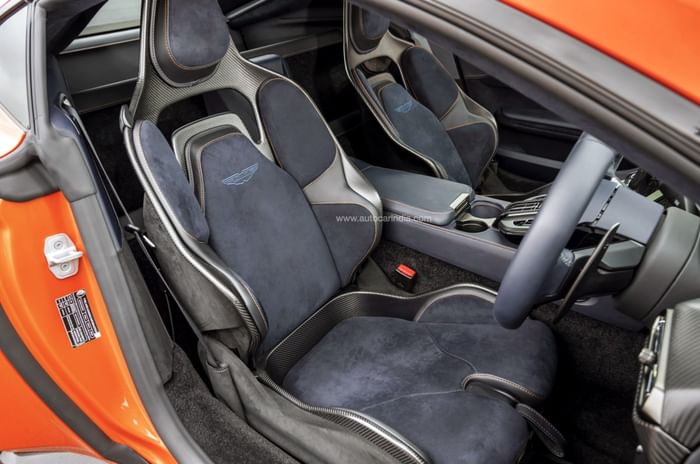
Quality is a huge step up from the previous car, and as ever, Aston Martin’s Q catalogue provides seemingly limitless possibilities for personalisation, including multiple preset ‘themes’, primary and secondary upholstery colours, and tinted carbon fibre. The new electronic architecture has allowed for a more robust suite of ADAS features, and the optional Bowers & Wilkins surround system is sublime.
2024 Aston Martin Vantage engine, gearbox and performance
Not that you’d ever be listening to music in your Vantage, because its sound is a big part of the experience, and when I asked if it was enhanced via the speakers, the engineer winced in disgust. It is significantly louder than the DB12, and about twice as brash in its timbre. The source of this symphony is the same 4.0-litre twin-turbo M177 V8 from Mercedes-AMG as before, but with a 30 percent power bump to 665hp. That, you’ll note, puts it neatly above both the Porsche 911 Turbo S and the Ferrari Roma, but also just 15hp shy of the DB12, with an equal 800Nm of torque. This might confound those who buy their cars only by spec sheet, but even they’ll drive it and soon realise this is something wildly different.
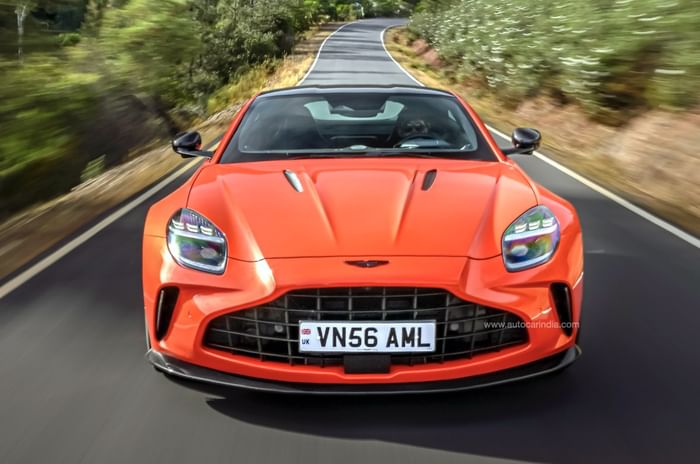
As before, there’s no relaxed ‘GT’ drive mode as there is in the DB12 and DBX; it goes Sport, Sport+ and Track, which alters responsiveness, steering weight, damper stiffness and exhaust volume. Sport mode treads a fine line between on-road usability and high-performance responsiveness, with a delicate right foot dictating which way the car will behave. It will never be as relaxing as the DB12 is in its GT mode, but it’s still a manageable and acceptable amount for a sportscar. If you want to let loose on a nice road, you can click the dial up to Sport+, which is enough to get your adrenaline pumping without too much of a challenge, and with enough of a safety net.
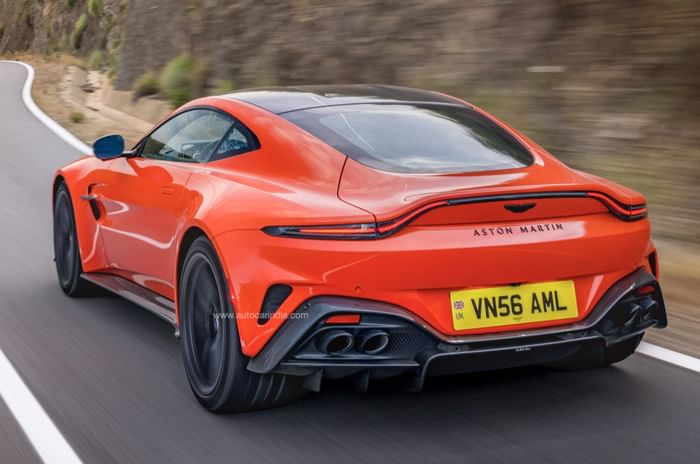
In any mode, the throttle is far more responsive than the previous Vantage, thanks in part to a shorter final drive for the new-gen ZF 8-speed transaxle torque converter auto. On the subject, the ’box provides the requisite aggression and shift drama when you want it, and can be smooth and gentle when you don’t, but it showed a reluctance to downshift at the limit, which doesn’t happen in rivals that use dual-clutch gearboxes.
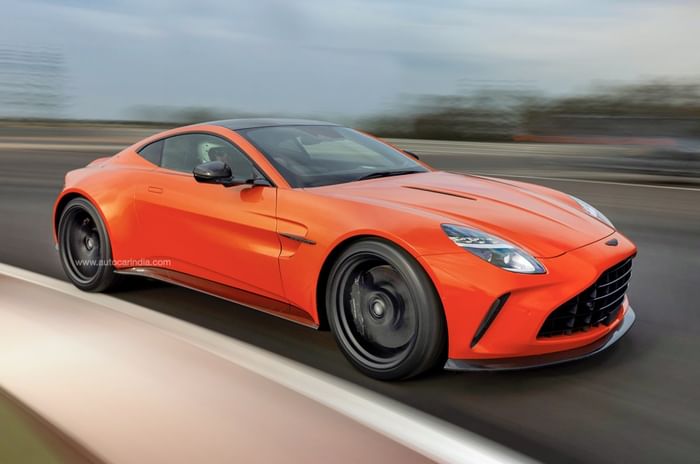
Aside from the beautiful mountain roads around Sevilla in Spain, Aston Martin let us loose for some laps around the Monteblanco circuit – a 3.7km layout with a good mix of fast and tight corners. Like many of our Indian tracks, the surface is not marble smooth, so much that they recommended we avoid the super-aggressive Track mode altogether. After some familiarisation, I still gave it a brief go, but soon understood why it wasn’t recommended. The performance leap from Sport+ to Track is far greater, the suspension far stiffer and the traction control (TCS) far more liberal. It should certainly never be used on the road, but even on the track, it felt like a serious effort, and one left only to lap- time chasers. What’s more, the TCS gets nine settings, so you can choose how much slip you want on the fly.
2024 Aston Martin Vantage ride and handling
That high-strung nature extends to the handling in Track mode as well, which felt twitchy and required constant correction at the steering and pedals. The rock-hard suspension in this mode didn’t help, causing the Vantage to fidget over the merest tarmac blemish. Dialling back to Sport+ felt ideal here, with a more benign response from all the controls, particularly the steering. In the frequent instances oversteer reared its head, it wasn’t scary in Sport+, and in fact easy to catch and correct, even for a non-professional like myself. I soon started chasing after it.
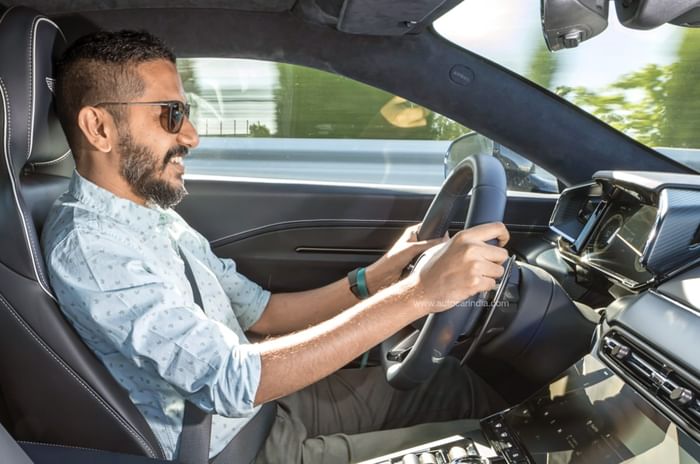
The mechanical update isn’t restricted to just a power bump; the chassis has been given a once-over too. Apart from the increased width, there’s additional cross bracing at both axles, as well as in the floor for vastly greater stiffness. The aero package is more aggressive, the steering is quicker, the rear e-diff can go from open to locked in just 135ms, and the new Bilstein DTX adaptive dampers are said to have 500 percent greater bandwidth! All this results in a Vantage that’s way more reactive and agile than even its predecessor. The 50:50 weight distribution (as opposed to 48:52 in the DB12) and front-mid-engine layout means you’re at the centre of the action and the car rotates around you.
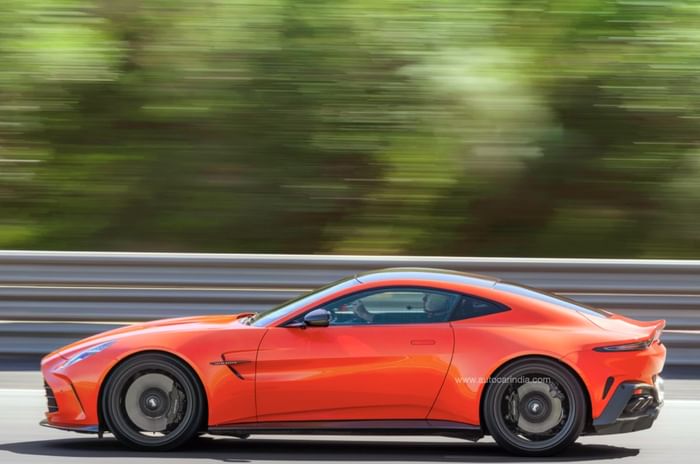
On the track, pushed to its limit, its 1,745kg kerb weight can be felt in the corners, and though the steering is quick, it’s not pin sharp or super communicative, so perhaps it falls behind a 911 in outright precision. That said, this is only the base Vantage, and more focused versions are expected later. On the road, in Sport+ mode, it feels thrilling and engaging even at middling speeds, and that’s ideal in a sportscar. The ride is firm, again not helped by the missing GT mode, nor by the fact the 21-inch wheel size is standard; you can’t have taller tyres even if you want to. Refinement is not as good as the DB12, and while that’s good for hearing the engine, tyre noise over a rough surface can be grating.
2024 Aston Martin Vantage price and verdict
To the uninitiated, Aston Martin’s sportscar line-up will seem confounding. Similar looking, with the same engine, gearbox, platform and tech; not to mention hardly any power difference. But somehow, through the magic of design and engineering, they’ve made the Vantage feel completely distinct from the DB12. Where the DB12 broadened the abilities of its predecessor, the new Vantage does the opposite – it has become a more focused sportscar, and it now looks unquestionably gorgeous.
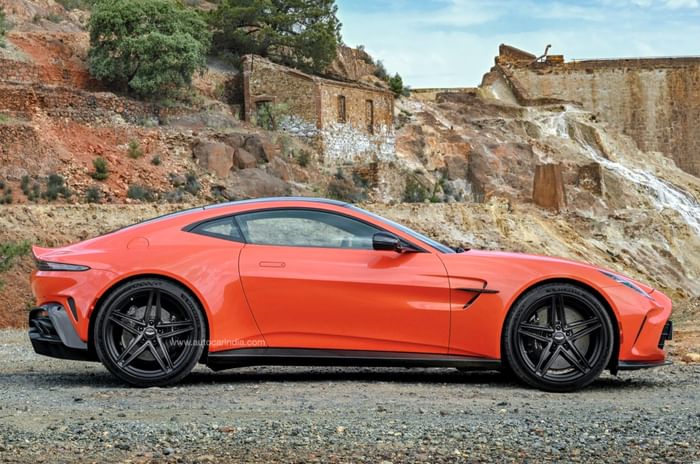
The conundrum is the price. At Rs 3.99 crore (ex-showroom, before options), the Vantage is more expensive than its traditional rivals, and just Rs 60 lakh shy of the DB12; not a huge gap in supercar money. For the average buyer, especially in India where numbers talk, it would make sense to just move up to the ‘bigger’ car. But I’ll go out on a limb to say the Vantage is the more convincing of the two. Not only does it get you 95 percent of the DB12 for less money, it is the louder, more dramatic, more charismatic sportscar, and is more fun more of the time. Makes you wonder how it is the baby of the range.
Also see:
New Aston Martin Vantage video review
New Aston Martin Vantage launched at Rs 3.99 crore
Tech Specs 
Copyright (c) Autocar India. All rights reserved.


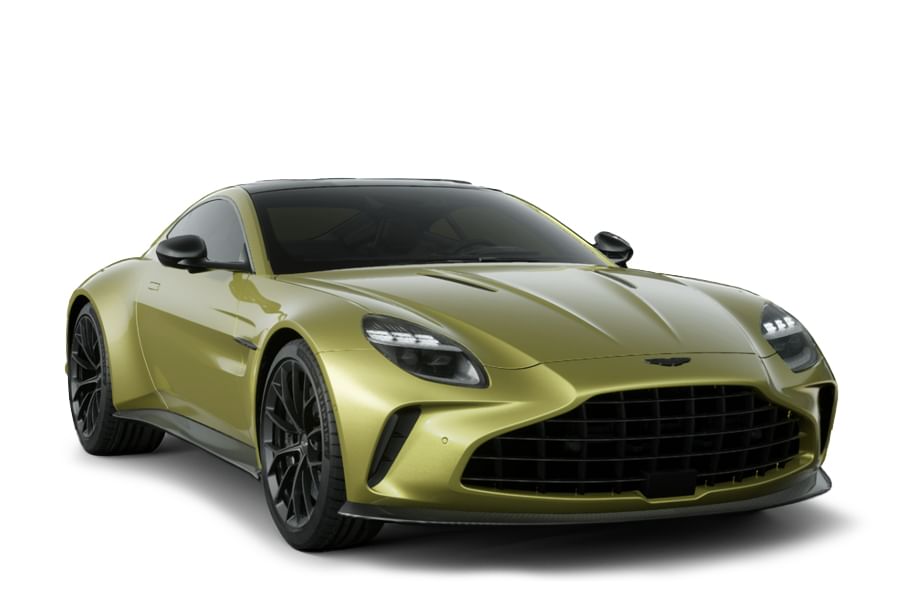



 Price
Price Engine
Engine Efficiency
Efficiency Acceleration
Acceleration Body
Body Steering
Steering Dimensions
Dimensions
Comments
Member Login
Personal Details
No comments yet. Be the first to comment.